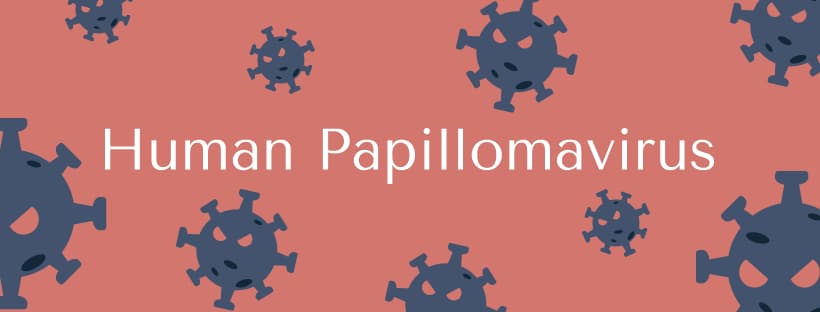Cervical cancer is caused by many factors, however, HPV is only one of them. For cervical HPV infection to develop into cancer, additional cofactors are required. Co-infection with other viruses, immunosuppression, low socioeconomic status, poor hygiene, and a diet low in antioxidants are other likely cofactors. Long-term use of hormonal contraceptives, high parity, early initiation of sexual activity, multiple sex partners, tobacco use, and co-infection with HIV have been identified as established cofactors. Although they have not yet been specifically defined, host genetic and immunological characteristics as well as viral factors including viral integration, viral load, and type variations are anticipated to have a significant role. Recognising that most cervical cancer cases in India manifest after the age of 30 years, regular medical checkups and screening should be started between 25- 30 years. While HPV testing is the best method, all the screening tests, namely, HPV, cytology, co-testing with both HPV and cytology, and Via, are other options available today. Primary prevention with the HPV vaccine is strongly recommended and screening must continue after vaccination too. Regular screenings using Pap tests and human papillomavirus (HPV) testing to identify any precancers and cure them can frequently avoid cervical cancer. Additionally, it can be avoided by getting the HPV vaccine. Here are five top things you can do to prevent the risk of cervical cancer:
1. Timely Vaccination
The FOGSI has given the HPV vaccination Gardasil and Cervarix the go-ahead to prevent cervical cancer in people between the ages of 9 and 45 that is brought on by HPV. Your doctor will help you understand the efficacy of the vaccine, possible side effects and the need for regular screening despite taking the vaccine. It must be considered that the HPV vaccine does not treat pre-existing infections or disorders; it only prevents future HPV infections. Because of this, getting the HPV vaccination before being exposed to the virus has the best results.
Click here to get doctor-verified answers to the most commonly asked questions about HPV.
2. Screening
Routine screening tests are the best approach to guarantee that doctors identify cervical cancer early. An HPV or Pap Smear can be performed by a physician. They can even take both tests simultaneously, which they will refer to as a co-test.
Every 3-5 years, women between the ages of 25 and 65 who have a cervix should ask their doctor for cervical cancer screening via a Pap or HPV test.
HPV test: The World Health Organisation (WHO) claims that HPV is responsible for 99% of instances of cervical cancer. People can get the virus HPV, which is quite prevalent, through intercourse. It is significant to highlight that almost everyone who engages in sexual activity contracts HPV and that the majority of instances do not result in cancer. The HPV infection is often within the immune system's control. The HPV test looks for the presence of high-risk HPV strains in the cervical cells. It is recommended every 5 years if used as the primary method of cervical cancer screening.
PAP exam: This test is occasionally referred to as a PAP smear. The cervix's cells are examined for precancerous alterations during the test. If untreated, these cells might develop into cancer. A Pap exam is recommended every 3 years if used as the primary method of cervical cancer screening.
3. Eating right and exercising
Your risk level can significantly decrease with a healthy diet and consistent exercise. Include whole grains, fresh produce, and fresh veggies and fruits in your diet. They include phytochemicals and antioxidants that can aid in halting the development and spread of cervical cancer. Consume fruits like guava, amla, and kiwi, which are high in vitamin C since they are strong sources of antioxidants. If you want to take any dietary supplements, ask your doctor if you may.
4. Eliminating smoking
Smoking can result in a number of cancers, including cervical cancer. Smoking tobacco can impair the immune system, which makes it more difficult for the body to eradicate cancer cells. These toxins can also alter or damage a cell's DNA, which can lead to the onset of a tumour. The immune system and the body's capacity to fight cancer may be compromised if nicotine and other chemicals from tobacco enter the cervix through semen.
5. Using protection while having sex
Sexual contact can be risky. Females who began sexual activity before the age of 18 and those who have had six or more sexual partners are more likely to get HPV, according to the National Cancer Institute. Therefore, it helps to prevent HPV infection by using a barrier form of birth control, such as a condom or dental dam. Read: Top 5 questions to ask your gynaecologist.
Note: A person can still get HPV through skin-to-skin contact - meaning that condoms and dental dams cannot provide complete protection but do reduce the risk significantly.
Disclaimer: This information is educational and should not be construed as medical advice. Please consult your doctor before making any dietary changes or adding supplements.
Proactive For Her is a digital clinic for women, offering accessible, personalised, and confidential healthcare solutions. We offer outpatient care, diagnostic services and programs for various health concerns of Indian women, across their lifetime - from puberty to pregnancy to menopause.

